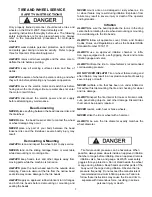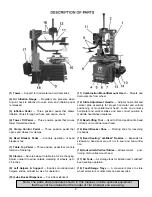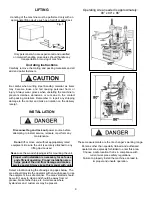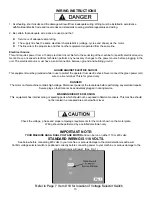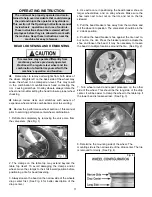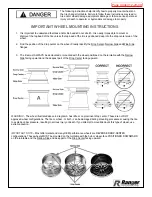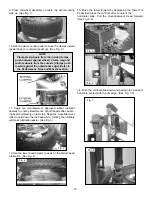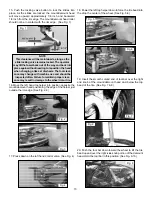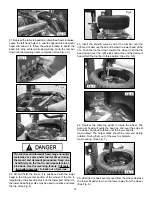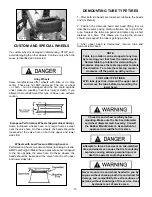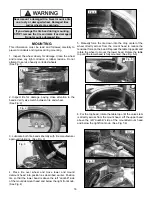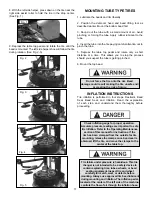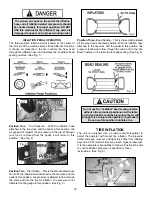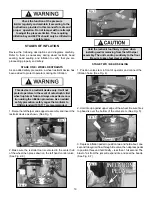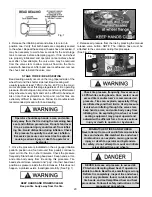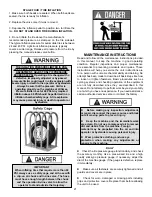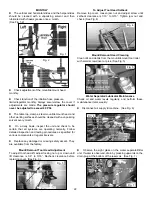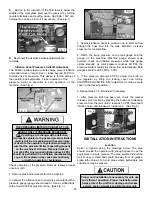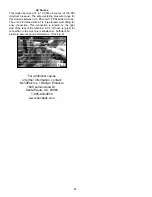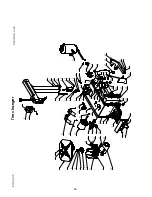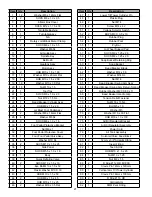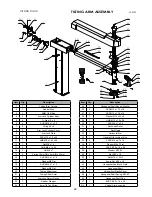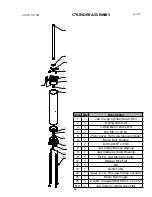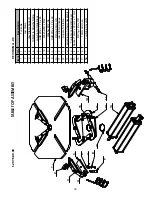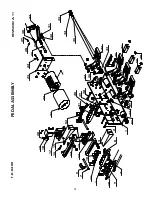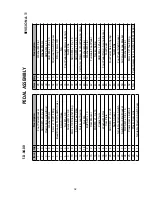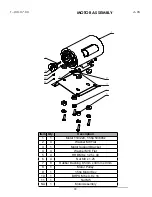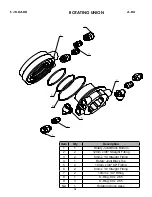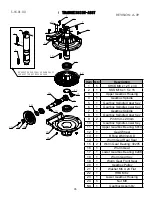
20
4. Release the inflation pedal and allow it to return to
position one. Verify that both beads are completely sealed
to the wheel. Repeat these steps if beads have not sealed. It
may be necessary to wait a few seconds for the air storage
tank to recover before attempting again. If tire and wheel
are properly lubricated and operator cannot achieve bead
seal after a few attempts, the valve core may be removed
from the valve stem to allow more air flow into the tire to
assist with bead seal. After bead seal is achieved, remove
the chuck and reinstall the valve core.
STAGE THREE / BEAD SEATING
Bead seating usually occurs on the long tapered side of the
wheel first and the shorter side last. Bead seating will
usually require at least 7 PSI in the tire. 40 PSI is the maxi-
mum safe pressure at this stage regardless of tire operating
pressure. Most European import cars and many aftermarket
alloy wheels are very tight and can be difficult to bead seat.
Also note that asymmetrical hump and run-flat tires are
extremely difficult to bead seat. Follow tire manufacturer’s
recommended procedure for bead seating.
1. Once tire pressure is indicated on the air gauge (inflation
pedal in position one; foot removed from pedal), continue to
inject air into the tire in short intervals. Check the pressure
frequently. Stand back during bead seat. Keep hands, arms,
and entire body away from tire during this procedure. Tire
beads should move outward and “pop” into their bead seat
position as pressure inside the tire increases. If this does not
happen, a problem exists. Investigate carefully. (See Fig. 1)
KEEP HANDS AND FINGERS CLEAR.
Keep entire body away from the tire.
2. Release air pressure from the tire by pressing the manual
release valve button. NOTE: The inflation hose must be
attached to the valve stem during this procedure.
(See Fig. 2)
Operator should keep hands, arms, and entire
body away from the tire during the remaining bead
seat and inflation procedures. Do not stand over
tire, as personal injury could result. from inflat-
ing tire. Avoid distraction during inflation. Check
tire pressure frequently to avoid over inflation.
Excessive pressure can cause tires to explode,
causing serious injury or death to operator or
bystander.
Fig. 7
Fig. 1
Fig. 2
Check tire pressure frequently. Never exceed
40 PSI while seating beads. Once seated, never
exceed tire manufacturer’s recommended air
pressure. Tires can explode, especially if they
are inflated beyond their limits. At all pressure
levels when inflating through the valve stem,
keep hands, arms, and entire body away from
inflating tire. An exploding tire, wheel, or bead
sealing equipment may propel upward and
outward with sufficient force to cause serious
injury or death to operator or bystander.
NEVER increase air pressure to exceed 40
PSI when attempting Bead Seat. If operator is
unable to obtain Bead Seat, something is wrong.
Deflate tire completely, inspect tire and wheel,
correct any problems found, re-lubricate both
tire beads, and reattempt Bead Seal and Seat
procedures. Follow all safety instructions in this
manual and on machine.
MIS-MATCHED TIRES AND WHEELS
Never attempt to mount and inflate mis-matched
tires and wheels. Mis-matched tire and wheel
combinations can explode, causing personal
injury or death to operator and bystanders.
For safety, do not attempt to mount and inflate
mis-matched tires and wheels.
Содержание R23
Страница 25: ...25...
Страница 26: ...26 R23 00 00 REVISION A 22 Tire changer...
Страница 44: ...44 3 7 3 5 66 0 PL330B 00 00 REVISION A 04...
Страница 47: ...47 This page left intentionally blank...

